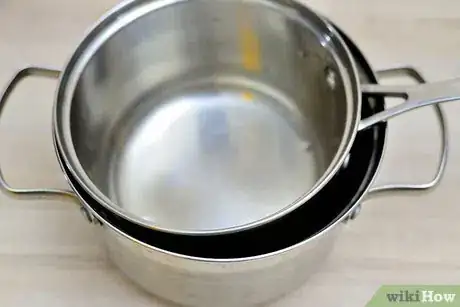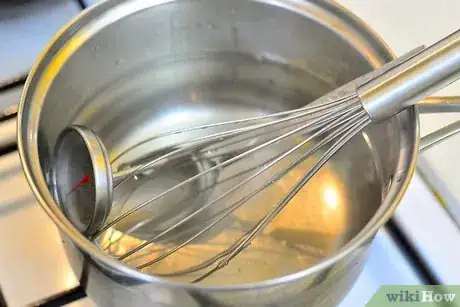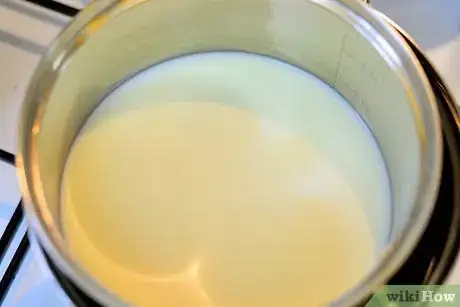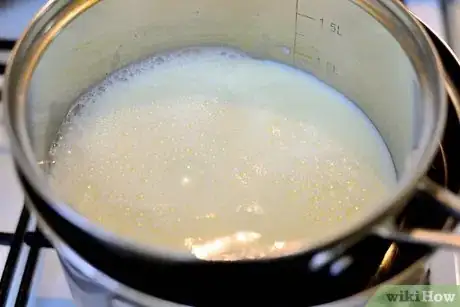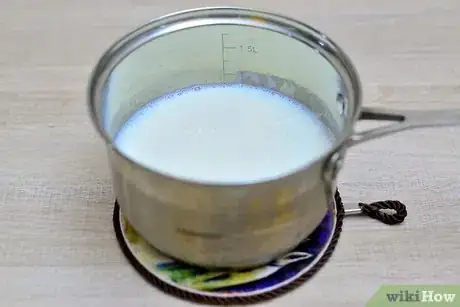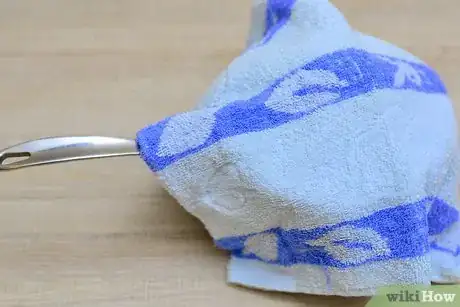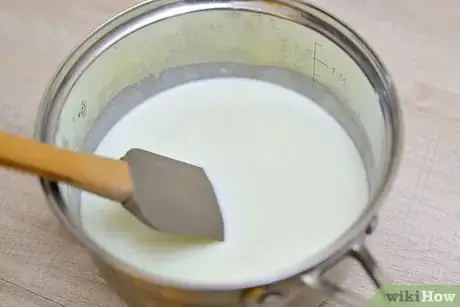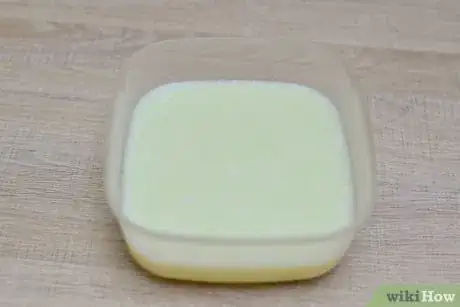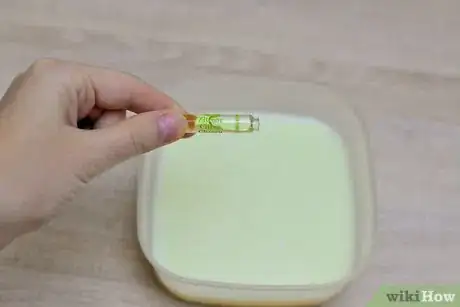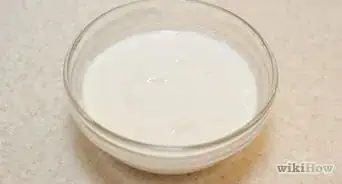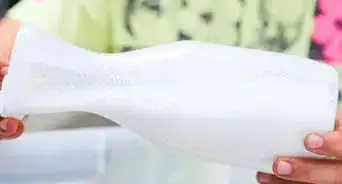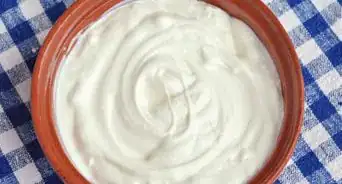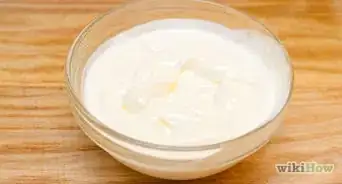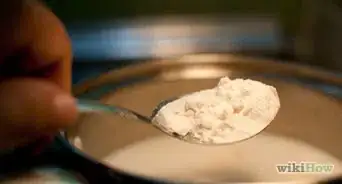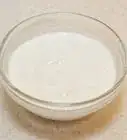X
wikiHow is a “wiki,” similar to Wikipedia, which means that many of our articles are co-written by multiple authors. To create this article, volunteer authors worked to edit and improve it over time.
This article has been viewed 50,728 times.
Learn more...
Making yogurt can help you save money compared to buying it from your local grocery store, provide a healthier alternative, and present a fun, family project. With a few items you likely already have in your kitchen, which include milk and some lemon extract, you can learn how to make lemon yogurt on your own. A variety of yogurt recipes are available online to help you find the right mixture for your palate.
Steps
-
1Build a water jacket. Put your bigger stock pot in the sink, and place the smaller pot inside it. Fill the larger pot with water until you get about halfway up the side of the smaller pot. During this step, your milk and starter yogurt should be at room temperature.
- This step is optional, but it can help keep your results consistent and prevent the milk from scalding. If your milk scalds, you will not be able to use it to make yogurt.
-
2Sterilize the equipment. Place the thermometer and spoon in the large pot full of water, and place your smaller pot upside-down on top of it. Bring the water to a boil. Use tongs or an oven mitt to remove the tools from the boiling water, and dry them with a towel.
- This step is also optional, but because you have to bring water to a boil regardless, you should ensure that everything you are using is sterile.
Advertisement -
3Put the smaller pot inside the pot of boiling water. Add the milk to the pot. If you did not create a water jacket with the 2 pots before starting, you can heat the milk in its own pot. Make sure you constantly stir it to prevent scalding. Pour the milk slowly because the small pot will try to float in the boiling water. Clip your thermometer onto the side of the pot with the milk.
-
4Use the thermometer to heat the milk to 185 degrees Fahrenheit (85 degrees Celsius). This step is necessary to get the milk proteins ready for the culture. You can do this without a thermometer, but you need to watch carefully for the milk to froth. Constantly stir the milk, and keep the water boiling. Hold the milk at this temperature for a 30 minutes if you want a thick yogurt consistency.
-
5Cool the milk's temperature down to 110 degrees Fahrenheit (43.33 degrees Celsius). This is the temperature the milk needs to be to get the cultures to reproduce on their own. You can either fill a sink with cold water and cool down the milk with a water bath, or allow the milk to cool on its own.
-
6Pour the starter yogurt into the cooled milk. If you do not have plain, active cultured yogurt, you can use freeze-dried cultures. This is the only batch of yogurt you will need for the starter. All subsequent batches can be started using a portion of the previous batch.
-
7Stir the milk and starter. Place it in a corner where it will not be bothered, and cover it with a lid. Put a heating pad set to medium on top of a cutting board, and put the pot of milk on top of it. Cover the pot with a towel.
-
8Remove the yogurt from the heating pad after 7 hours. Use a spatula to ensure the milk has curdled. Stir the yogurt to mix curds and liquid.
-
9Pour the yogurt into containers. Usually old yogurt or ricotta cheese containers work well. Put in the back of the refrigerator where it is the coldest. Allow the yogurt to chill undisturbed overnight.
-
10Add lemon extract to the yogurt, and stir well to finish making lemon yogurt. Do not attempt to add flavoring or sweetener to the yogurt before the bacteria have had their chance to work. Since there is no added sugar in the formula, this is a healthier option. Add honey or Stevia if you want a natural or calorie-free sweetener. Save a few tablespoons (30 to 45 mL) for starting your next batch.
-
11Finished.
Advertisement
Community Q&A
-
QuestionHow much lemon extract should I use?
 Community AnswerIt depends on how strong of a lemon flavor you want. I would recommend using no more than a tablespoon as the taste might become overwhelming, but if you aren't a huge fan of a strong lemon flavor, then I would add 1-2 teaspoons.
Community AnswerIt depends on how strong of a lemon flavor you want. I would recommend using no more than a tablespoon as the taste might become overwhelming, but if you aren't a huge fan of a strong lemon flavor, then I would add 1-2 teaspoons.
Advertisement
Warnings
- Do not use ultra-pasteurized or ultra-high pasteurized milk to make your yogurt.⧼thumbs_response⧽
Advertisement
Things You'll Need
- 1/2 gallon (1.89 L) milk
- 2 to 3 tablespoons (30 to 45 mL) plain yogurt with active cultures
- Stock pot, 8 to 10 Qt (7.56 to 9.45 L)
- Pot with lid, 4 to 5 qt. (3.78 to 4.73 L)
- Spoon
- Dial thermometer with a clip
- Heating pad
- Cutting board
- Dish towel
- Electric cooking pot (optional)
- Lemon extract
- Honey or Stevia (optional)
About This Article
Advertisement
